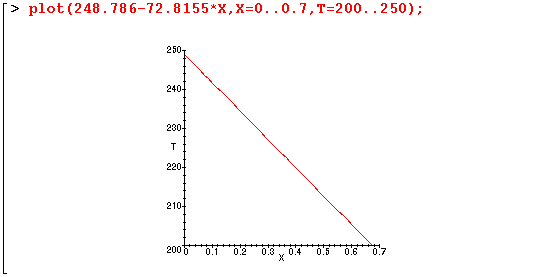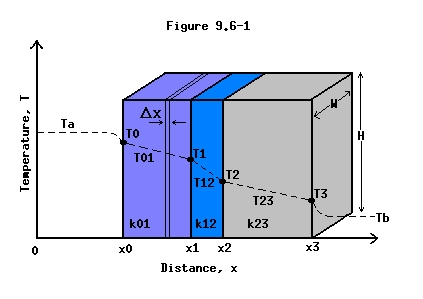
Walls: Addition of Resistances
In this section we are concerned with heat conduction through walls composed of a variety of materials each with a different thermal conductivity, k. One side of the wall is in contact with a warm fluid of temperature Ta and the other side of the wall is in contact with a cooler fluid of temperature Tb. Heat transferred at the boundaries from the warm fluid to the wall and from the wall to the cooler fluid is given by Newton's "law of cooling": q=h(T-Tfluid). This equation defines the "heat-transfer coefficient",h, and relates the heat flux at the solid-fluid interfaces to the differences in temperature at the wall surfaces and in the fluids.
The figure below contains a wall made up of three materials with different thicknesses and thermal conductivities.

Below is a Maple worksheet that derives the equations displayed in this section of the text for the above figure. The thermal conductivities are assumed to be constant and equal for all of the materials throughout the derivation.
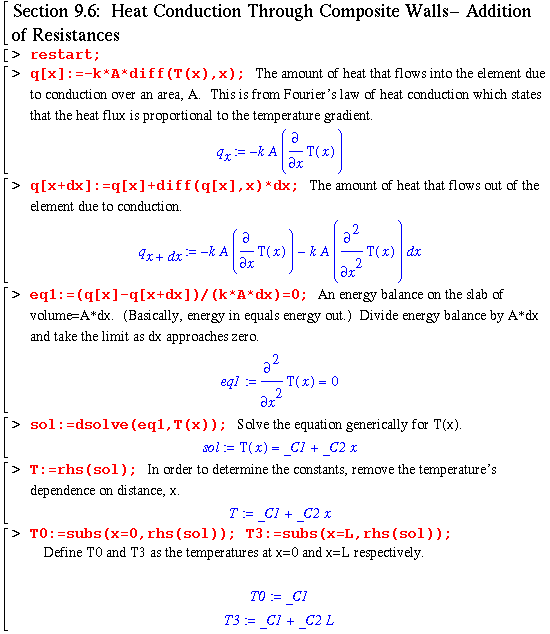
Now to solve for the unknown constants of integration using boundary conditions.
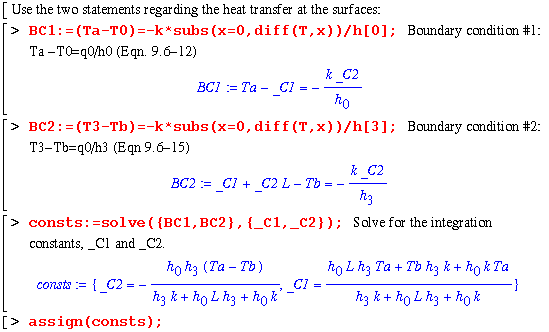
An equation for temperature in terms of the given constants.
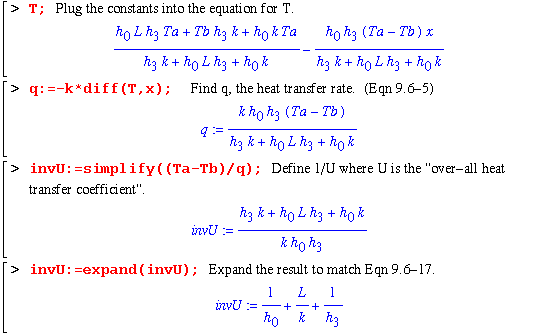
Now for a numerical example of heat conduction
through a wall of one composition:
This example develops an expression for the temperature distribution given the hot and cold fluid temperatures, thermal conductivity, heat transfer coefficient, and length of the wall.
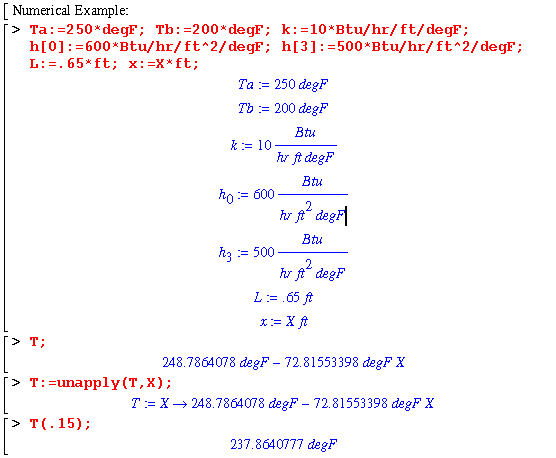
The plot below demonstrates the linear dependence of temperature on distance.
